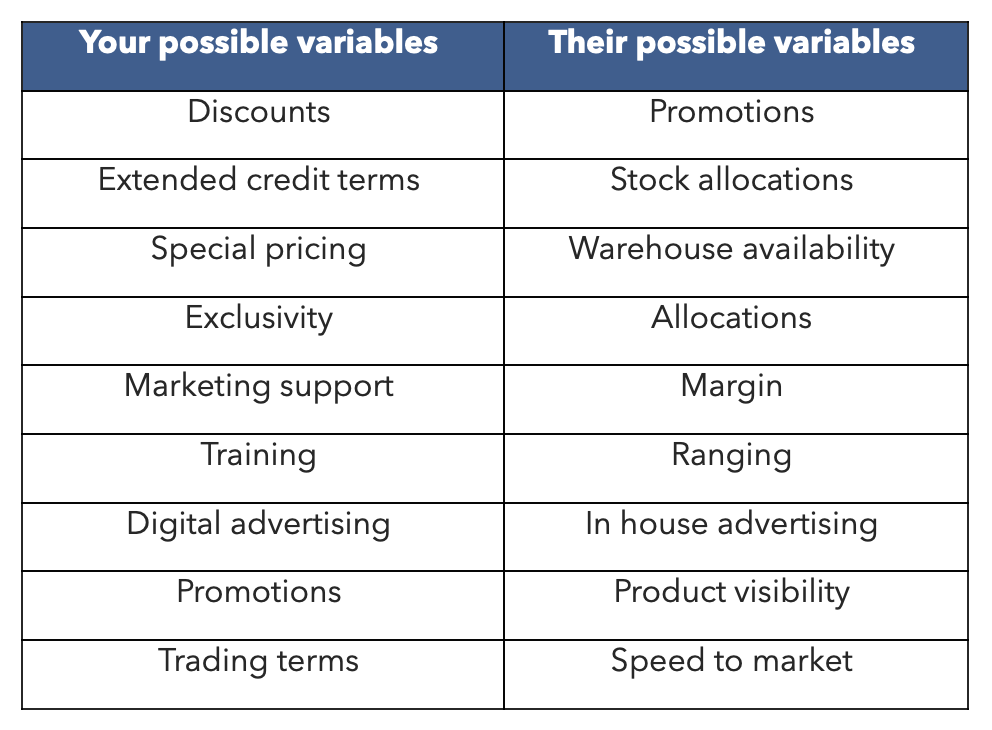Identifying variables in preparation for a negotiation is a key component to achieving a mutually beneficial outcome. Variables are tangible and intangible things you can offer and trade with during a negotiation that add value to the agreement. They can be related to price or conditions (such as exclusivity). Variables can be adjusted during the negotiation, when one party wants to amend a part of the deal, and the other party has the authority to do so.
During a negotiation, the more variables you have to trade with, the better. Think of them as levers you can pull to calibrate an acceptable outcome for you and your customer.
The price of having limited variables
In one particular instance we worked with a company that needed to drive some additional sales from a customer to meet their EOFY target. However, they only had one variable to trade with – that being a discount.
Instead of having more ‘eggs in the basket’, their entire strategy relied on giving a discount for volume.
As you would imagine, the negotiation centred on this variable. When the customer rejected the initial 10% discount offer, the company had no other variables prepared to influence the negotiation and attain the result they wanted.
By the time the negotiation had concluded, the discount variable was thrashed out to 25% for a minimal 5% in volume.
In this situation, the single variable was amended during the negotiation and both parties had the authority to change the discount level and volume return. This had limited the results of the negotiation as there was nothing else (no other variables) to trade with.
What does best practice look like when considering variables?
Instead of limiting options with one trading variable, make identifying variables part of your negotiation preparation process. While gathering information about the other party, seek to understand their priorities and interests. Then build a list of variables you can bring into the discussion to help solve their problem whilst also driving your desired outcome. This creates a win-win outcome for both parties.
A good place to start is to ask: ‘What could I offer that would be important to the other party?’ Think deeper and wider about variables you have the authority to include.
Some examples of variables that could be used int a B2B retail sector scenario:

Most organisations can come up with between 50 and 70 variables using some effort. Not all will be needed or used, it’s best to use the ones most appropriate to the negotiation once you’re in it and can make the call.
Identifying multiple variables on both sides provides you with additional levers and a wider range of choices to negotiate with. The more you have to leverage, the better your ability to find an acceptable exchange and greater returns for your organisation.






